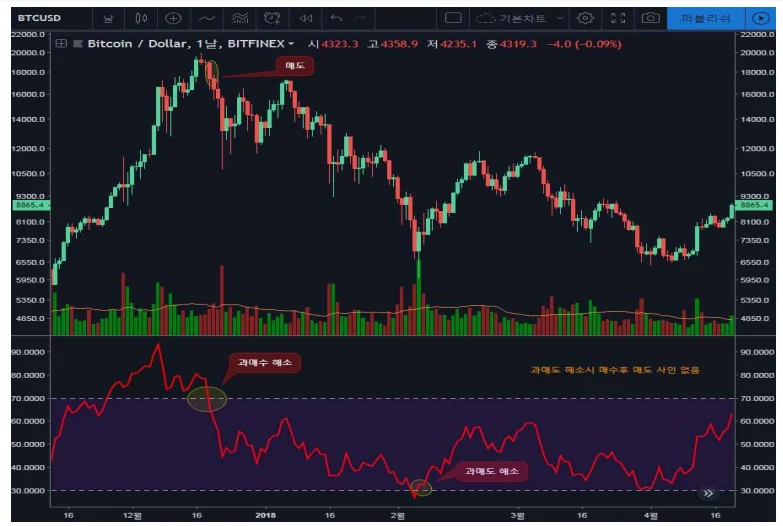Uses of RSI 2

● Buy when oversold resolves, sell when overbought resolves.
1.To compensate for buying in the oversold zone and selling in the overbought zone, you can consider a strategy of buying and selling when the RSI breaks and enters the band.
2.As shown in the picture, buy when oversold is resolved, and sell when overbought is resolved.
3.This can solve the problem when momentum continues when you buy unconditionally in an oversold section and sell unconditionally in an overbought section. However, as you can see, it is lagging, and unless it enters an overbought or oversold section, no buy or sell signal is issued.
4.Even in that case, there is no sell signal after buying, so you may not be able to sell even in the profit zone.
5.In other words, it is difficult to trade using this method alone and must be mixed with other strategies.
6.However, if you were unable to sell in the overbought section, it can be used as a reference to consider liquidating when the issue is resolved, or if you were unable to purchase in the oversold section, it can be used as a reference to consider purchasing when the issue is resolved.

● RSI Failure Swing
1.There are two types of Failure Swing: Top Failure Swing and Bottom Failure Swing.
2.Top failure Swing means that RSI forms a high point in the RSI overbought section and then falls without being able to break through that high point again. At this time, the seling point is the point that breaks below the low point created after the formation of the RSI high point.
3.Bottom Top Failure Swing means that RSI forms a low point in the RSI oversold section and then rises without being able to break that low point agian. AT this time, the buying point is the point that breaks above the high point created after the formation of the RSI low point.
4.Failure Swing can be used as a standard for setting a trading point when a doulble peak or double bottom is formed but the recent high point is low or the recent low point is high and does not provide divergence.